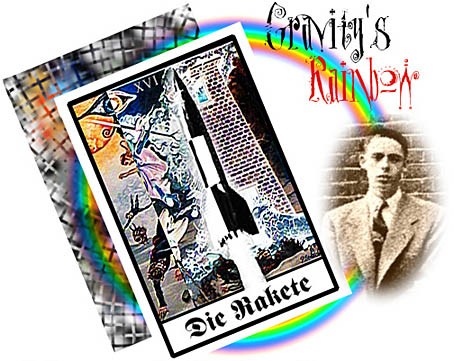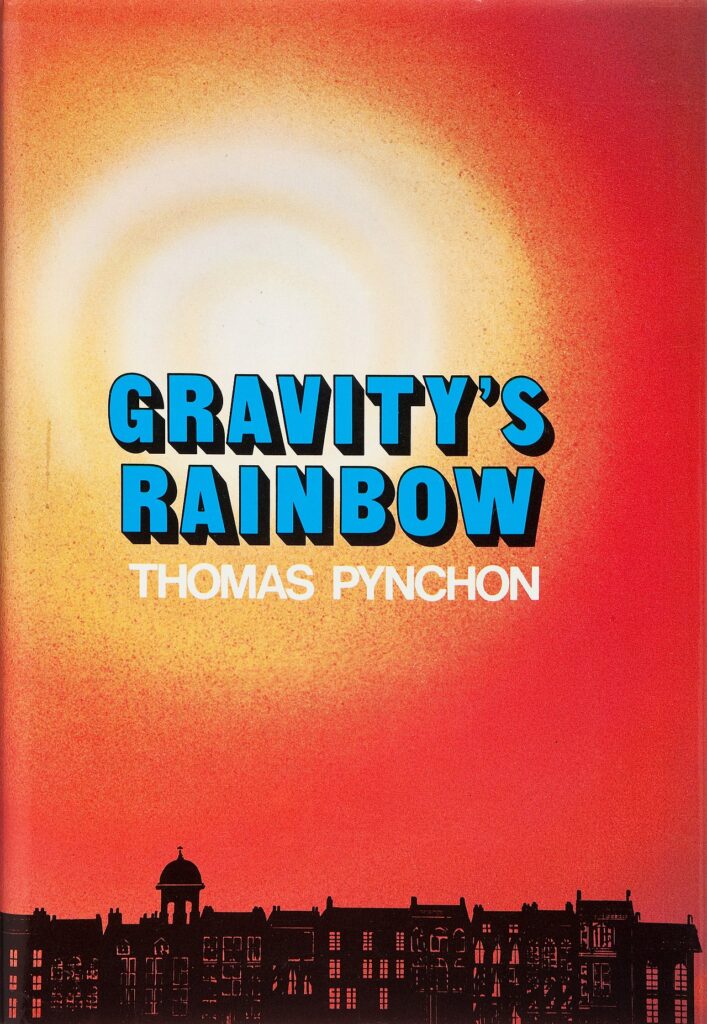Pynchon Works: “Gravity’s Rainbow”

Infected with the prevailing fondness out here for mindless pleasures
Thomas Pynchon’s Gravity’s Rainbow


Set in the closing months of World War II, Gravity’s Rainbow follows the adventures of one American soldier with the unlikely name of Tyrone Slothrop. Initially stationed in London, our hero weathers the V-2 rocket bombardment in an inexplicable way that attracts the attention of quite a few people, some of whom have less than honorable intentions. As the plot develops, Slothrop’s travels take him through an astonishing array of encounters, tribulations, and adventures, all taking place in a shifting network of alliances and transpiring under the shadow of the Rocket. And, you know—Ulysses is about two guys and their day, and Moby-Dick is about a fish.
Considered by most to be Pynchon’s greatest work, Gravity’s Rainbow is one of the most celebrated—and notorious—novels of the twentieth century. Crammed with countless allusions that range from rocket physics to pop culture, organized along a structure that satirizes the liturgical calendar while paradoxically drawing power from its symbolism, and stubbornly resisting any definite interpretation, Gravity’s Rainbow has achieved the status of a postmodern masterpiece, if not a modern Moby-Dick or Ulysses. The plot is complex and ingenious, the narrative is remarkably inventive, the cast of characters huge and unforgettably unique, and the themes explored by the novel seem to cover every aspect of human life. It would be impossible to do justice to this masterpiece with a simple entry here; below you’ll find a complete summary, an guide for first-time readers, and a loose structural analysis of the novel.
Spermatikos Logos Resources
Gravity’s Rainbow Summary — This summary by Dr Larry Daw breaks the book down chapter by chapter, providing a witty synopsis for each one.
Gravity’s Rainbow Introduction — The Quail’s introduction for the First Time Reader gives an overview of the novel, providing notes on structure, themes, and potential pitfalls. [TBD]
Gravity’s Rainbow Structural Analysis — The Quail’s analysis highlights the structure of the novel and provides some thought on liturgical dates, occult symbolism, and elements of heroic mythology. [TBD]
Professor Irwin Corey — A page about Professor Irwin Cory, who accepted the National Book Award for
Gravity’s Rainbow in 1974.
Offsite Resources
Gravity’s Rainbow Wiki — This wiki, created by Tim Ware and a legion of contributors, offers page-by-page and alphabetical guides to Pynchon’s magnum opus.
Selected Articles
Kipen, David
San Francisco Chronicle, 6 August 2000. Kipen reminisces about Gravity’s Rainbow: “Occasionally, I wonder whether I would commit murder to possess a nice first edition…”
Howard, Gerald
Bookforum, Summer 2005. An appreciation of Pynchon and Gravity’s Rainbow by Gerald Howard. From the “Pynchon Now!” issue.
Selected Reviews
Locke, Richard
From the March 11, 1973 New York Times, this is a famous review by the editor of the NYRB. Locke does a great job of pinpointing the major themes of Gravity’s Rainbow, even if he found parts of it “cold and dull.”
 0
0 


